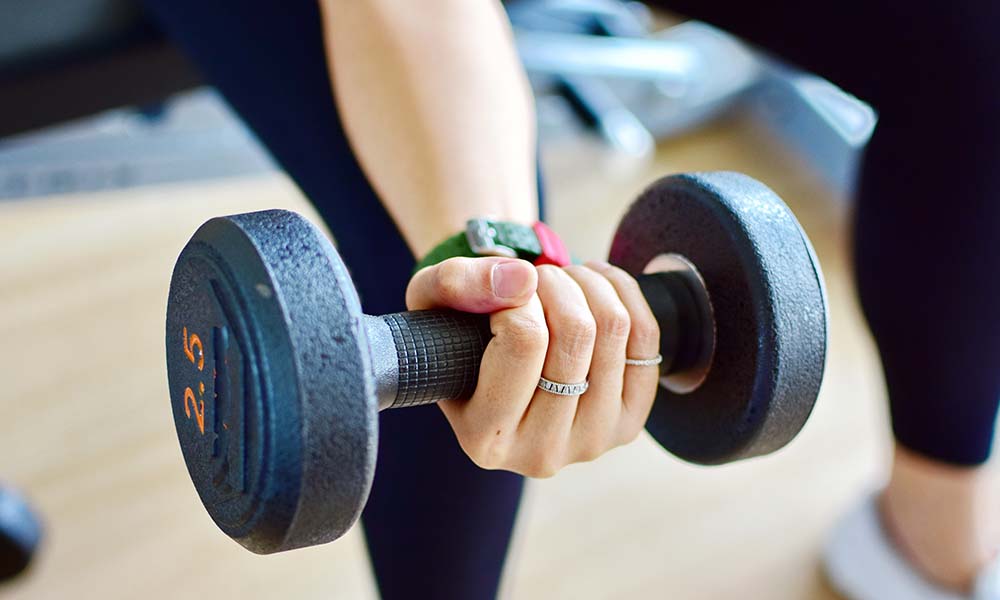Why Forearm Strength Matters: Benefits & Best Exercises

Strong forearm muscles do more than just help open stubborn jar lids. In fact, research shows that grip strength, which comes from forearm strength, directly connects to better immune function, cognitive performance and overall life satisfaction.
The forearm's complex network of twenty muscles, divided into flexors and extensors, plays a crucial role in daily activities and athletic performance. These muscles provide the stability needed for various exercises, from deadlifts to pull-ups, while supporting everyday tasks.
Let's explore the most effective forearm workouts and strengthening exercises. Readers will discover why dedicated forearm training matters and learn the best techniques to enhance their grip strength, which studies have linked to improved total body strength and reduced risk of falls and fractures.
Top 10 Forearm Exercises to Build Strength and Endurance

Building powerful forearms requires a combination of targeted exercises that work for different muscle groups. Here are the top 10 best forearm exercises that deliver remarkable results:
Farmer's Walk: Stand tall while holding heavy dumbbells at your sides. Walk 12-15 steps, maintaining proper posture. This exercise builds grip strength and forearm endurance.
Wrist Curls: Sit at a bench's edge and rest your forearms on your knees with palms facing up. Hold dumbbells and curl wrists upward. Perform 2-3 sets of 8-15 repetitions.
Reverse Wrist Curls: Similar to standard wrist curls, but with palms facing downward. This variation explicitly targets the extensor muscles.
Dead Hangs: Grip a pull-up bar with shoulders slightly engaged and hang for 30-60 seconds. This exercise significantly improves grip strength.
Zottman Curls: Hold dumbbells at the sides, perform a standard bicep curl, then rotate wrists at the top for a reverse curl on the way down.
Plate Pinch: Grip weight plates between thumb and fingers, either holding them or walking. This exercise develops finger strength and overall grip power.
Towel Cable Row: Attach a towel to a cable machine, grip both ends and pull towards the chest in a rowing motion. Complete 2-3 sets of 8-15 repetitions.
Hammer Curls: Stand with dumbbells at the sides, palms facing inward. Curl weights toward shoulders while maintaining a neutral grip.
Forearm Roller: Using an overhand grip on a wrist roller, flex weight back and forth in a rolling motion. This maximises forearm tension.
Grip Crushers: Hold dumbbells, allowing them to roll toward fingertips, then squeeze tightly while curling wrists upward.
Perform these exercises 2-3 times weekly with at least 48 hours between sessions for optimal results. However, beginners should start with lighter weights, focusing on proper form before increasing intensity. These exercises work best when performed at the end of upper body workouts to avoid compromising other movements that require grip strength.
Forearm Strengthening: Why It’s Essential for Your Fitness Routine
Regular forearm training stands as a cornerstone of a well-rounded fitness program. Many fitness enthusiasts focus solely on major muscle groups. However, forearm strength forms the foundation for numerous upper-body exercises.
Strong forearms act as the primary link between the body and any weight being lifted. Subsequently, enhanced forearm strength leads to better performance in compound movements such as deadlifts, rows, and pull-ups. Indeed, weak forearms often become the limiting factor in these exercises, preventing athletes from reaching their full potential.
Beyond the gym, forearm strength proves vital for daily tasks. Robust forearms make everyday activities more manageable, from carrying shopping bags to opening jars to opening jars. Moreover, proper forearm training helps prevent common issues such as tennis elbow & carpal tunnel syndrome by strengthening the supporting muscles around these vulnerable areas.

Athletes across various sports benefit from dedicated forearm training. Climbers rely on forearm endurance for extended periods of hanging and gripping. Martial artists need powerful forearms for grappling and striking. Tennis players depend on forearm strength for powerful serves and returns.
The benefits extend into injury prevention as well. Consequently, stronger forearms provide better wrist stability during exercises, reducing the risk of strains and sprains. This increased stability proves particularly beneficial during pushing movements like bench presses and overhead presses.
Forearm training enhances grip strength, which research links to longevity and overall health markers. People with stronger grips typically demonstrate better functional fitness and maintain independence in later years. This connection highlights how forearm strength contributes to quality of life beyond mere athletic performance.
Professional trainers recommend incorporating forearm exercises at the end of upper body workouts. This placement ensures the forearms remain fresh for compound movements earlier in the session. Regular attention to forearm development creates a solid foundation for continued strength gains across all areas of fitness.
Conclusion
Forearm training stands as a vital component of any complete fitness routine. The exercises outlined here offer a practical approach to building forearm strength, whether someone aims to improve athletic performance or daily functionality.
Strong forearms certainly deliver benefits beyond the obvious muscle gains. Research shows that enhanced grip strength links directly to better overall health, increased longevity, and improved performance across various sports. Additionally, proper forearm development helps prevent common injuries while supporting everyday tasks.
These exercises provide a solid foundation for anyone looking to strengthen their forearms. Beginners should start slowly, focusing on proper form before adding weight or complexity. Meanwhile, experienced athletes can mix these movements into their existing routines for continued progress.
Remember that consistency matters more than intensity when building forearm strength. A dedicated approach to these exercises, performed twice weekly with adequate rest, will lead to noticeable improvements in grip strength and overall forearm function. Most importantly, these gains will transfer to both athletic activities and daily life, making every task that requires hand strength easier and more efficient.
FAQs
What are the best exercises to strengthen forearms?
Wrist curls, reverse wrist curls, farmer's carries, grip squeezes, and towel hangs effectively target forearm muscles.
How often should I train my forearms?
Training forearms 2-4 times weekly delivers optimal results. Research shows that training ten times weekly provides no additional benefits compared to 3-3 sessions. Accordingly, spacing workouts allows proper muscle recovery between sessions.
How often should I train my forearms?
Training forearms 2-4 times weekly delivers optimal results. Research shows that training ten times weekly provides no additional benefits compared to 3-3 sessions. Accordingly, spacing workouts allows proper muscle recovery between sessions.
When should I schedule forearm exercises in my workout?
Place forearm exercises at the end of your workout. Early forearm fatigue might compromise performance in main exercises requiring grip strength unless positioned correctly.
Why is forearm strength important?
Forearm strength enhances grip, supports daily activities, improves sports performance, prevents injuries, and boosts overall upper-body endurance and stability Beginners should focus on proper form and start with lower volumes. Progress gradually by improving technique before increasing weights or repetitions.


